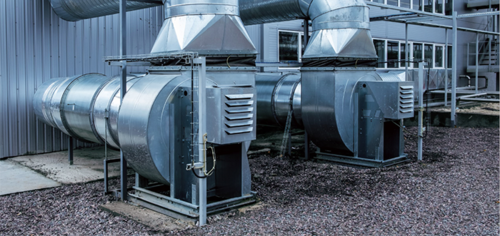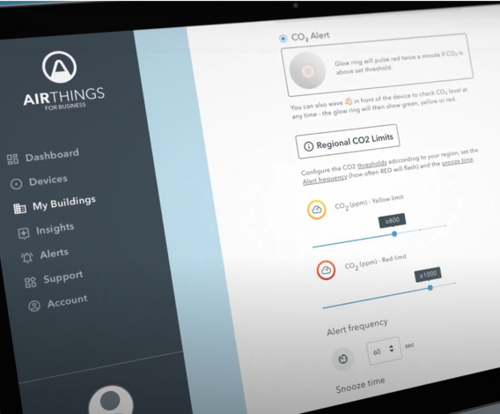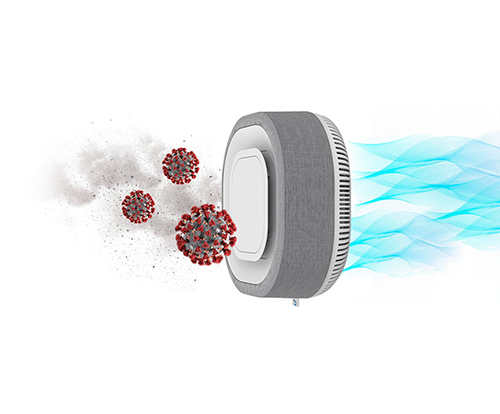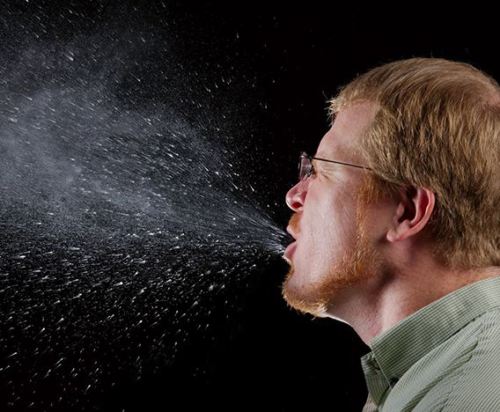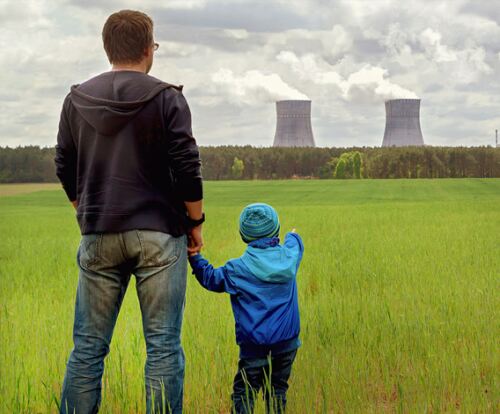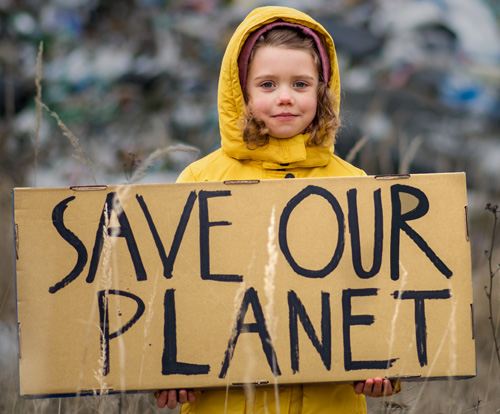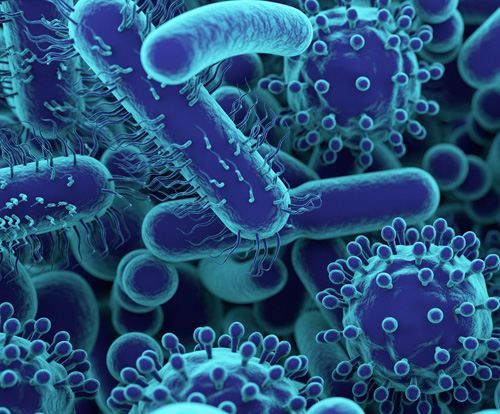
What’s in the air we breathe outdoors?
The WHO Global air quality guidelines offer global guidance on thresholds and limits for key air pollutants that pose health risks. The Guidelines apply worldwide to both outdoor and indoor environments and are based on expert evaluation of current scientific evidence for:
- particulate matter (PM)
- nitrogen dioxide (NO2)
- sulphur dioxide (SO2)
- ozone (O3)
 Particulate matter (PM)
Particulate matter (PM)
A range of dust, dirt and liquids suspended in the air, classified according to size, from the smallest PM1 and PM2.5 to the largest PM10 which is still only about the fifth of the thickness of a human hair. Many of the particles that form PM can enter the bloodstream and be transported around the body, lodging in the heart, brain and other organs. Therefore, exposure to PM can result in serious impacts to health, especially in vulnerable groups of people such as the young, elderly and those with respiratory conditions.
 Natural particulate sources include sea salt, dust (airborne soil, also called crustal material), secondary sulphate, pollen, black carbon from wild fires, and volcanic ash.
Natural particulate sources include sea salt, dust (airborne soil, also called crustal material), secondary sulphate, pollen, black carbon from wild fires, and volcanic ash.
Manmade sources include, agricultural operations, industrial processes, combustion of fossil fuels (especially wood and coal), construction and demolition activities, and vehicles (exhaust emissions, brake and tyre dust). It is thought that road traffic causes a quarter of all PM2.5 in towns and cities.
Chronic exposure to particulates increases the risk of developing cardiovascular and respiratory diseases, as well as lung cancer, dementia and strokes. Small particulate pollution has health impacts even at very low concentrations, in fact, no threshold has been identified below which no damage to health is observed. Therefore, the WHO Global guideline limits aim to achieve the lowest concentrations of PM possible. Concentrations across the UK are currently much higher than the levels the World Health Organisation considers safe.
 Nitrogen dioxide (NO2)
Nitrogen dioxide (NO2)
 A poisonous gas produced by road traffic, power plants and other fossil fuel combustion processes, NO2 causes chronic respiratory conditions including asthma, bronchial conditions, lung inflammation and reduced lung function.
A poisonous gas produced by road traffic, power plants and other fossil fuel combustion processes, NO2 causes chronic respiratory conditions including asthma, bronchial conditions, lung inflammation and reduced lung function.
Short-term exposure to concentrations of NO2 can cause inflammation of the airways and increase susceptibility to respiratory infections and to allergens and it can exacerbate the symptoms of those already suffering from lung or heart conditions and trigger asthma attacks. In addition, NOx can cause changes to the environment by changing soil chemistry and affecting biodiversity in sensitive habitats. Nitrogen oxides are also precursors for the formation of low level ozone outside. Since 2010, the UK has exceeded EU annual legal limits for nitrogen dioxide with the latest statistics showing that 86% of areas measured have levels above the legal limit.
 Sulphur dioxide (SO2)
Sulphur dioxide (SO2)
 Sulphur dioxide (SO2) is a corrosive, acidic gas which is predominantly produced from the combustion of coal or crude oil. Direct exposure to SO2 is associated with asthma and chronic bronchitis and can lead to irritation and constriction of the airways. SO2 is also known to combine with nitrogen oxides and ammonia to form particulate matter which has serious health implications discussed above. SO2 can also combine with water vapour in the atmosphere to form acid rain that may be transported large distances and cause significant damage to important ecosystems such as forests and freshwater habitats.
Sulphur dioxide (SO2) is a corrosive, acidic gas which is predominantly produced from the combustion of coal or crude oil. Direct exposure to SO2 is associated with asthma and chronic bronchitis and can lead to irritation and constriction of the airways. SO2 is also known to combine with nitrogen oxides and ammonia to form particulate matter which has serious health implications discussed above. SO2 can also combine with water vapour in the atmosphere to form acid rain that may be transported large distances and cause significant damage to important ecosystems such as forests and freshwater habitats.
 Ozone (O3)
Ozone (O3)
 Ozone at ground level – not to be confused with the ozone layer in the upper atmosphere – is one of the major constituents of photochemical smog. It is formed by the reaction with sunlight (photochemical reaction) of pollutants such as nitrogen oxides (NOx) from vehicle and industry emissions and volatile organic compounds (VOCs) emitted by vehicles, solvents and industry.
Ozone at ground level – not to be confused with the ozone layer in the upper atmosphere – is one of the major constituents of photochemical smog. It is formed by the reaction with sunlight (photochemical reaction) of pollutants such as nitrogen oxides (NOx) from vehicle and industry emissions and volatile organic compounds (VOCs) emitted by vehicles, solvents and industry.
As a result, the highest levels of ozone pollution occur during periods of sunny weather. Excessive ozone in the air can have a negative effect on human health, causing breathing problems, triggering asthma, reducing lung function and causing lung diseases.
 Carbon dioxide (CO2)
Carbon dioxide (CO2)
 The primary outdoor source of CO2 comes from the burning of fossil fuels, such as wood and coal. Other sources include wildfires, volcanic eruptions, decomposing vegetation and other biomass and motor vehicle pollution. As trees and plants clean the air of CO2, an indirect reason of increasing levels of CO2 is deforestation. Outdoors CO2 makes up a small proportion of the air we breathe at around 0.04 percent, compared with 21 percent oxygen and 78 percent nitrogen. Indoors CO2 is more detrimental to human health as it builds quickly in poorly ventilated indoor spaces – more on indoor pollution here.
The primary outdoor source of CO2 comes from the burning of fossil fuels, such as wood and coal. Other sources include wildfires, volcanic eruptions, decomposing vegetation and other biomass and motor vehicle pollution. As trees and plants clean the air of CO2, an indirect reason of increasing levels of CO2 is deforestation. Outdoors CO2 makes up a small proportion of the air we breathe at around 0.04 percent, compared with 21 percent oxygen and 78 percent nitrogen. Indoors CO2 is more detrimental to human health as it builds quickly in poorly ventilated indoor spaces – more on indoor pollution here.
An excerpt from a paper published at the Yale School of the Environment by Nicola Jones makes stark reading: ‘The 1950s was when man-made emissions really began to take off, going from about 5 billion tons of CO2 per year in 1950 to more than 35 billion tons per year today. Natural sources of CO2, from forest fires to soil and plant respiration and decomposition, are much bigger than that — about 30 times larger than what mankind produces each year. But natural sinks, like plant growth and the oceans, tend to soak that up. The excess produced by mankind’s thirst for energy is what makes the CO2 concentration in the air go up and up. Once in the air, that gas can stay there for millennia.”
And it’s significant that so much carbon dioxide stays in the atmosphere because CO2 is the most important gas for controlling Earth’s temperature. According to a 2011 paper on the Carbon Cycle, published on NASA’s Earth Observatory website, Earth’s temperature will increase at least another 0.6 degrees Celsius (1 degree Fahrenheit) because of carbon dioxide already in the atmosphere. This really highlights the need to reduce carbon emissions from the burning of fossil fuels at every opportunity. As coal, oil, gas and wood are burned they release the carbon they have accumulated and stored over millions of years.
Latest Articles
The business risks emerging from the global COVID-19 pandemic
Read More >Why indoor spaces have a higher risk of virus transmission
Read More >Enhance HVAC performance, improve energy efficiency and reduce emissions
Read More >High absenteeism and reduced wellbeing
Read More >How does air quality affect your business
Read More >What the experts say
Read More >Risk indicators and monitoring
Read More >Ventilation and filtration
Read More >Transmission & Prevention
Read More >The History of Air Pollution
Read More >Ambient Air Pollution
Read More >Indoor air pollution & the indoor generation
Read More >Climate change and the climate emergency
Read More >What’s in the air we breathe indoors?
Read More >Other indoor biological pollutants
Read More >How air pollution affects our lives
Read More >

